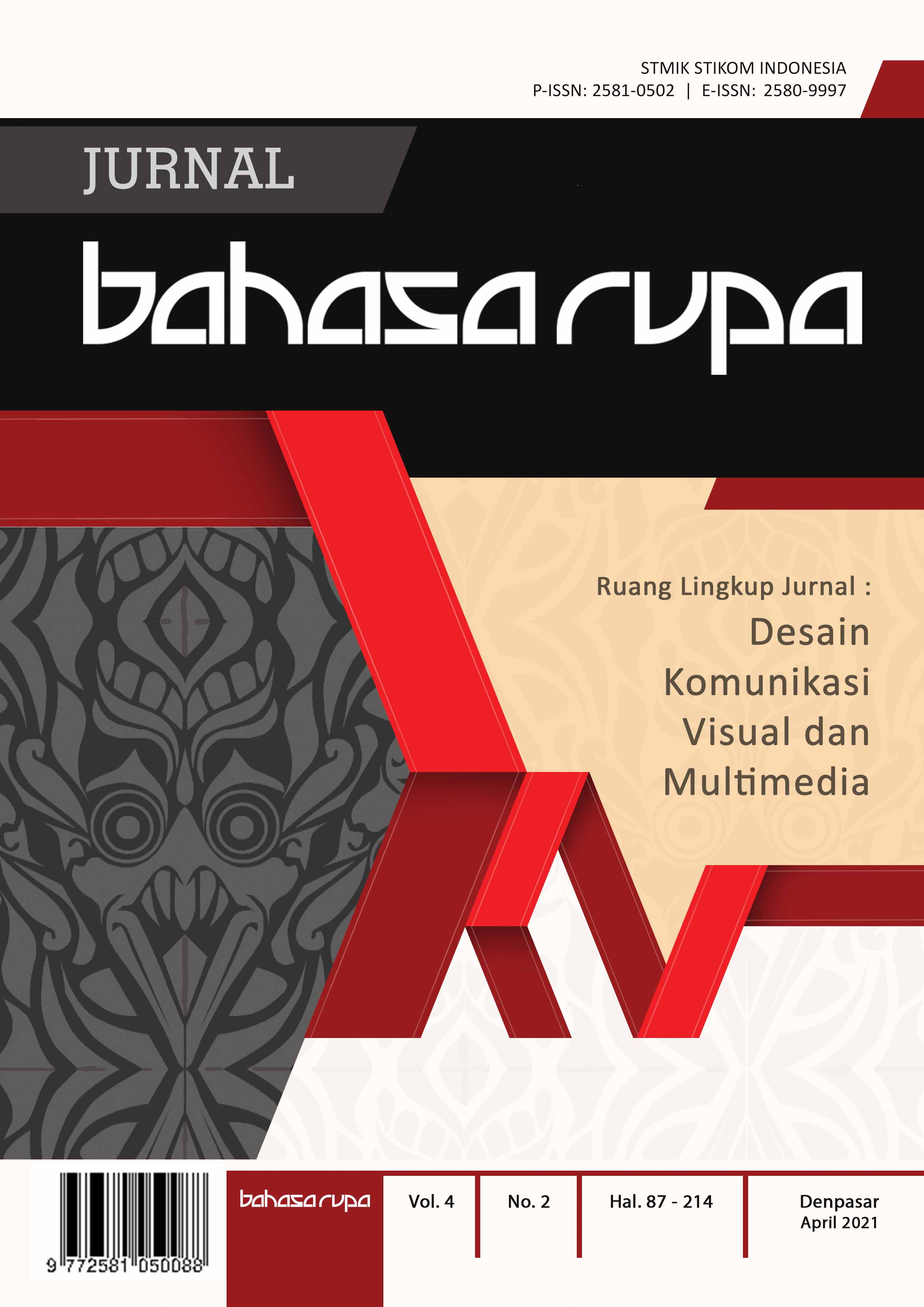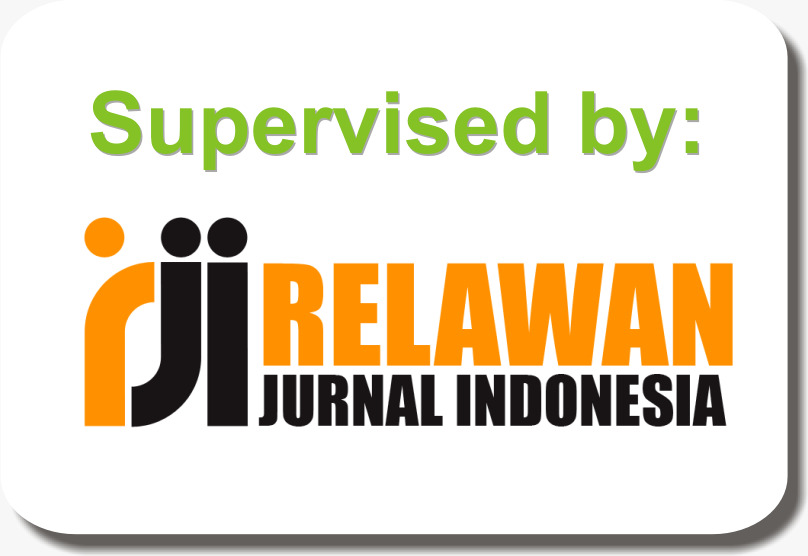VIDEO ANIMASI MOTION GRAPHIC DAN TIPOGRAFI KINETIK SEBAGAI MEDIA SOSIALISASI PENCEGAHAN VIRUS CORONA
DOI:
https://doi.org/10.31598/bahasarupa.v4i2.659Keywords:
Animasi, Film Animasi 2D, Corona Virus, Tipografi KinetikAbstract
Animation is a static image that is displayed sequentially so that the image becomes a moving image. Apart from being an entertainment, animation has also become a guide, an inspiration, as well as a means of socializing. Along with the development of technology, there are many techniques for making animation. These techniques aim to improve the quality of the image, as well as the animation movement itself. There is a lack of awareness to maintain health in society today. Many people do not understand the importance of maintaining health to stay healthy. Recently, there has been an unclear paradigm towards the transmission of the Covid -19 virus. The spread of a virus that is very mobile, will definitely have a bad impact. This is exacerbated by the state of unclear issues, where there is a lack of socialization of the preventive action of the Covid-19 virus, especially in Indonesia. Based on these things, in this study a socialization video was made about preventing the spread of the Covid -19 virus, based on 2-dimensional animation using kinetic typography techniques. So, the final result of this research is in the form of an animated video as a 2-dimensional based socialization media regarding the prevention of transmission of the Covid -19 virus to the public visually in the form of an animated video.
References
F. Kedokteran and U. Lampung, “Wellness and healthy magazine,” vol. 2, no. February, pp. 187–192, 2020.
T. P. Velavan and C. G. Meyer, “The COVID-19 epidemic,” Trop. Med. Int. Heal., vol. 25, no. 3, pp. 278–280, 2020, doi: 10.1111/tmi.13383.
R. M. Sekti and A. Fayasari, “Edukasi Gizi dengan Media Audiovisual terhadap Pola Konsumsi Sayur Buah pada Remaja SMP di Jakarta Timur,” J. Ilm. Kesehat., vol. 1, no. 2, p. https://ojs.yapenas21maros.ac.id/index.php/jika/is--https://ojs.yapenas21maros.ac.id/index.php/jika/ar, doi: 10.36590/jika.v1i2.15.
G. P. P. A. Yasa, K. A. S. Narpaduhita, and D. G. Purwita, “Perancangan Film Animasi Pendek 2D Sebagai Media Kampanye Penanganan Anxiety Disorder,” J. Bhs. Rupa, vol. 2, no. 2, pp. 146–152, 2019, doi: 10.31598/bahasarupa.v2i2.368.
A. Luthfiasari, “Potensi Kinetic Typography Sebagai Media Informasi,” Wimba J. Komun. Vis., vol. 10, no. 2, pp. 85–93, 2019, doi: 10.5614/jkvw.2019.10.2.2.
A. M. R. Youllia Indrawaty, Dewi Rosmala, “Aplikasi Pembelajaran Alat Musik Gitar Menggunakan Model Skenario Multimedia Interaktif Timeline Tree,” J. Inform., pp. 1–12, 2013.
H. B. Attamimy and M. B. Qomaruddin, “Aplikasi Health Belief Model Pada Perilaku Pencegahan Demam Berdarah Dengue,” J. PROMKES, vol. 5, no. 2, p. 245, 2018, doi: 10.20473/jpk.v5.i2.2017.245-255.
Y. Syahrul, “Penerapan Design Thinking Pada Media Komunikasi Visual Pengenalan Kehidupan Kampus Bagi Mahasiswa Baru Stmik Palcomtech Dan Politeknik Palcomtech,” J. Bhs. Rupa, vol. 2, no. 2, pp. 109–117, 2019, doi: 10.31598/bahasarupa.v2i2.342.
R. Carina, “PENGGUNAAN HURUF DEKORATIF DALAM TIPOGRAFI KINETIS,” Dimens. DKV seni rupa dan desain DKV seni rupa dan desain, vol. 4, no. april, pp. 17–32, 2019.
Sugiono, Metode Penelitan Kuantitatif, kualitatif dan R&D. 2007.
Downloads
Published
How to Cite
Issue
Section
License
Copyright (c) 2021 Dwi Krisbiantoro, Sitaresmi Wahyu Handani, Ilfa Jawahiril Falah

This work is licensed under a Creative Commons Attribution-NonCommercial-ShareAlike 4.0 International License.
The author's copyright in the Bahasa Rupa Journal, assigns that the publication of published articles is owned by the editorial board with the author's approval, but the rights are still with the author. The legal rules for accessing digital electronic articles are under license  Attribution-NonCommercial-ShareAlike 4.0 International (CC BY-NC-SA 4.0), which means that the Bahasa Rupa Journal has the right to store, modify, manage databases, maintain and publish articles without the author's permission, but the author as the copyright holder is still written as it is. Articles published in Bahasa Rupa Journals, both in hard and soft copy forms are available as open access, for educational, research and library purposes, and beyond that purpose, the editorial board of the Language and Language Journal is not responsible for illegal copyright infringement. This journal also applies LOCKSS and CLOKSS archiving.
Attribution-NonCommercial-ShareAlike 4.0 International (CC BY-NC-SA 4.0), which means that the Bahasa Rupa Journal has the right to store, modify, manage databases, maintain and publish articles without the author's permission, but the author as the copyright holder is still written as it is. Articles published in Bahasa Rupa Journals, both in hard and soft copy forms are available as open access, for educational, research and library purposes, and beyond that purpose, the editorial board of the Language and Language Journal is not responsible for illegal copyright infringement. This journal also applies LOCKSS and CLOKSS archiving.













.png)





